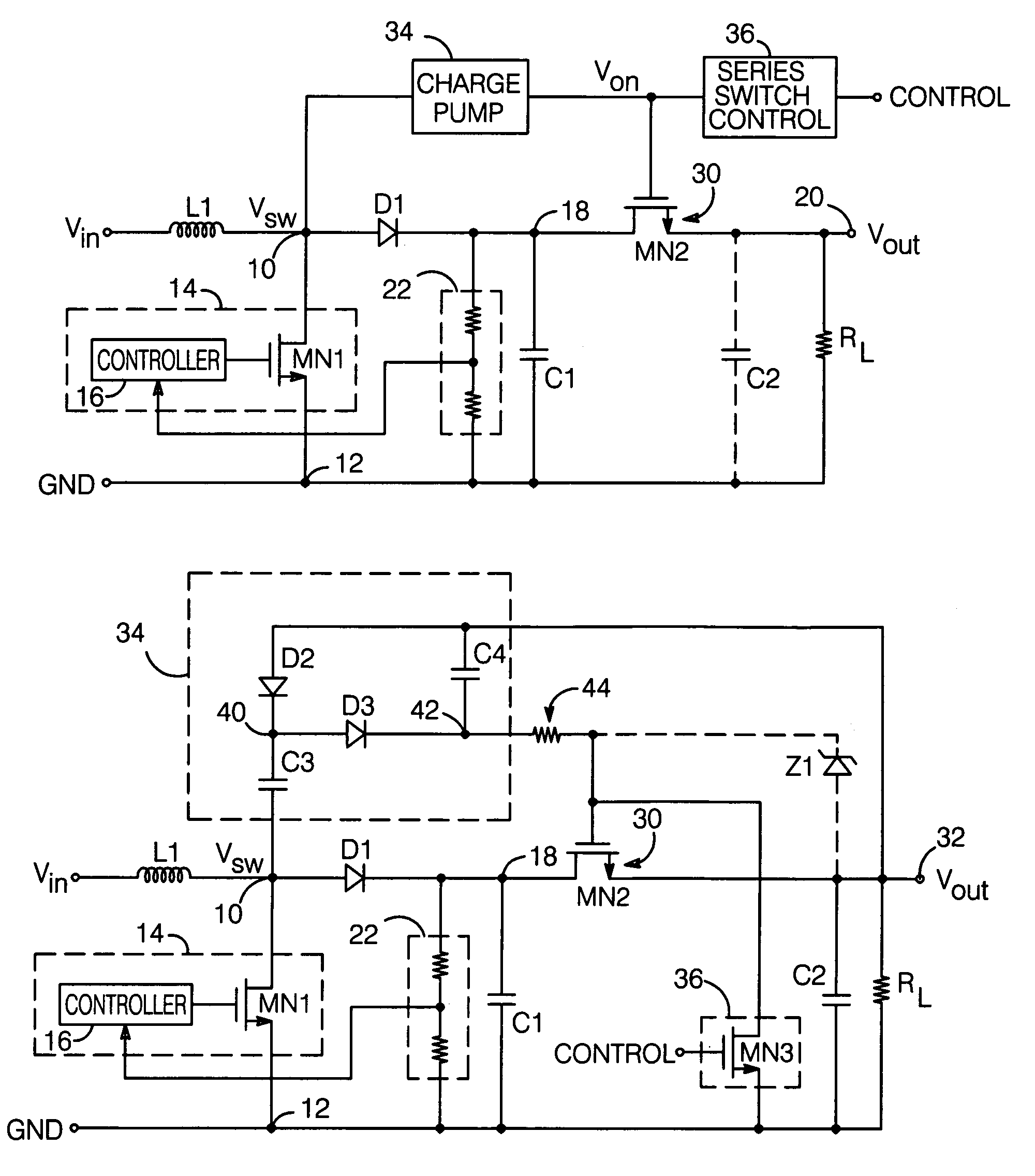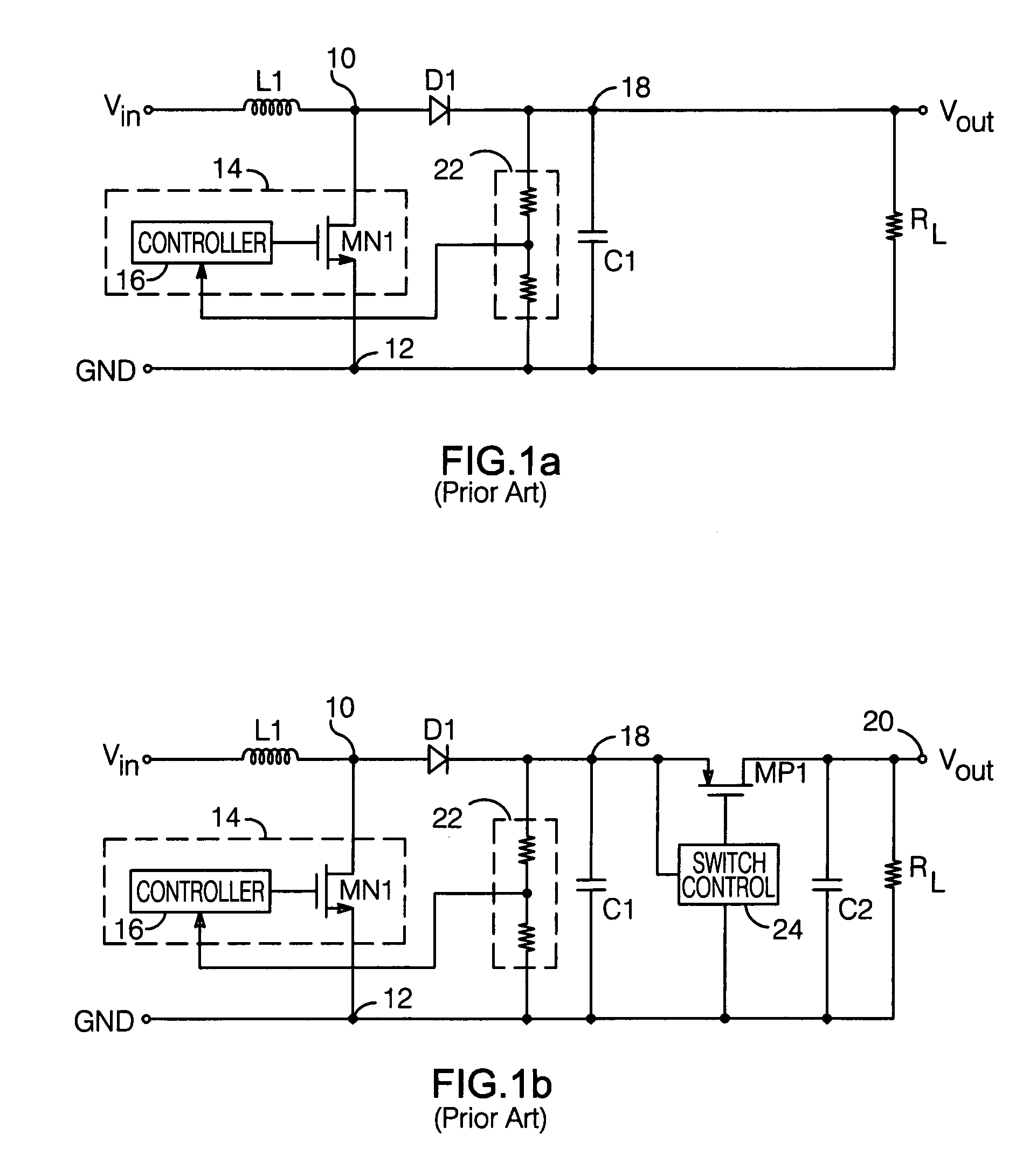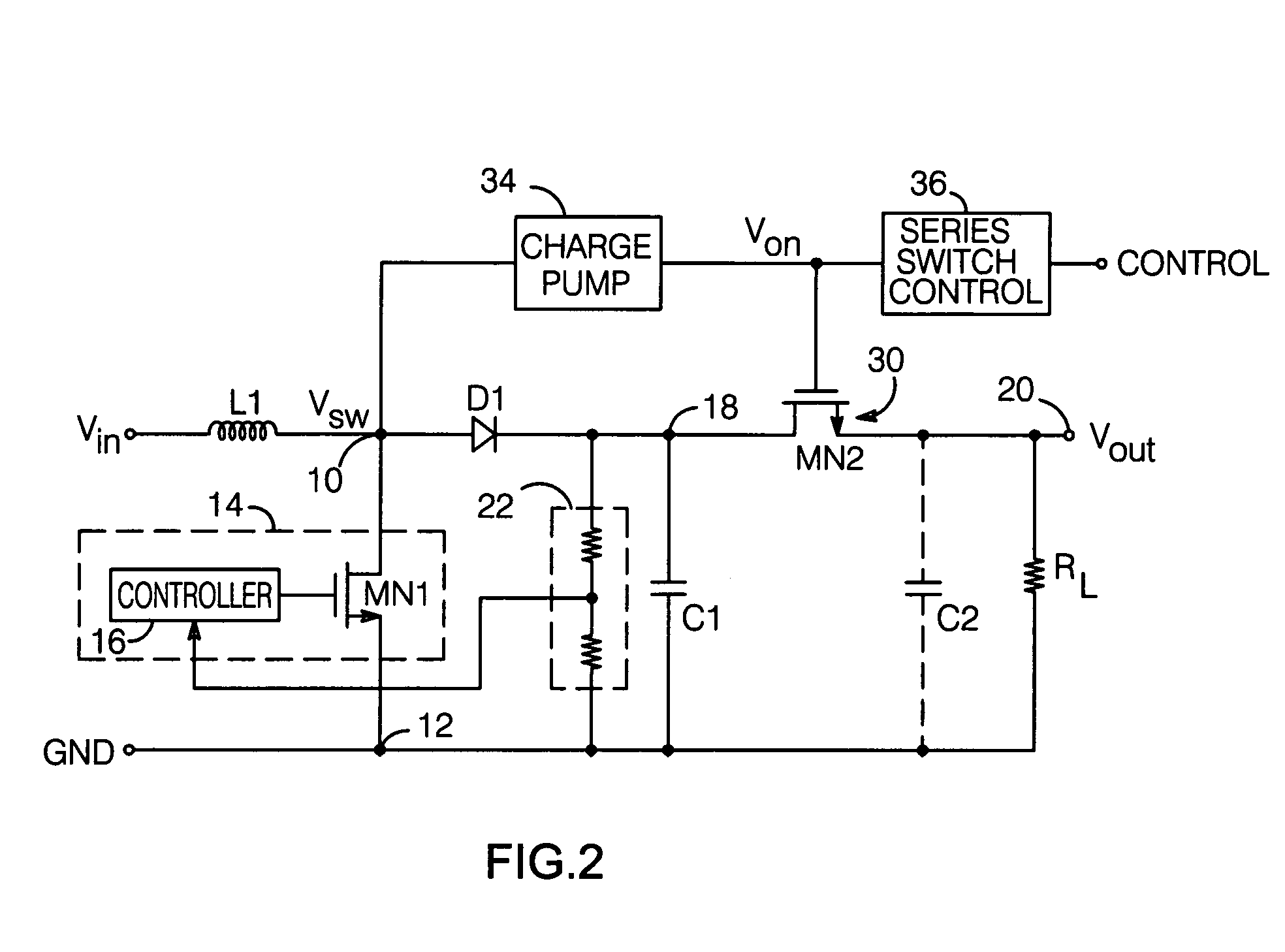Boost converter with series switch
a series switch and converter technology, applied in the direction of power conversion systems, instruments, process and machine control, etc., can solve the problems of inability to go out, inability to achieve output, and inability to achieve feedthrough, etc., to achieve lower resistance, reduce the resistance, and reduce the size of the di
- Summary
- Abstract
- Description
- Claims
- Application Information
AI Technical Summary
Benefits of technology
Problems solved by technology
Method used
Image
Examples
Embodiment Construction
[0021]The present invention may be useful with various switching voltage converter configurations, but is particularly advantageous when employed with a boost converter due to the inherent input voltage feedthrough problem described above. For simplicity, a boost converter application is used to illustrate the present invention, though the series switch arrangement described herein could be used with other converter types. It should also be noted that, though the exemplary embodiments herein are described and shown implemented with FETs, bipolar transistors could also be used.
[0022]A boost converter with series switch per the present invention is shown in FIG. 2. As described above, an input voltage Vin is connected to one terminal of inductor L1, the other terminal of which is connected to switching node 10. A switch—here implemented with a field-effect transistor (FET) MN1, though other types of switching devices could also be used—is connected between switching node 10 and a circ...
PUM
 Login to View More
Login to View More Abstract
Description
Claims
Application Information
 Login to View More
Login to View More - R&D
- Intellectual Property
- Life Sciences
- Materials
- Tech Scout
- Unparalleled Data Quality
- Higher Quality Content
- 60% Fewer Hallucinations
Browse by: Latest US Patents, China's latest patents, Technical Efficacy Thesaurus, Application Domain, Technology Topic, Popular Technical Reports.
© 2025 PatSnap. All rights reserved.Legal|Privacy policy|Modern Slavery Act Transparency Statement|Sitemap|About US| Contact US: help@patsnap.com



